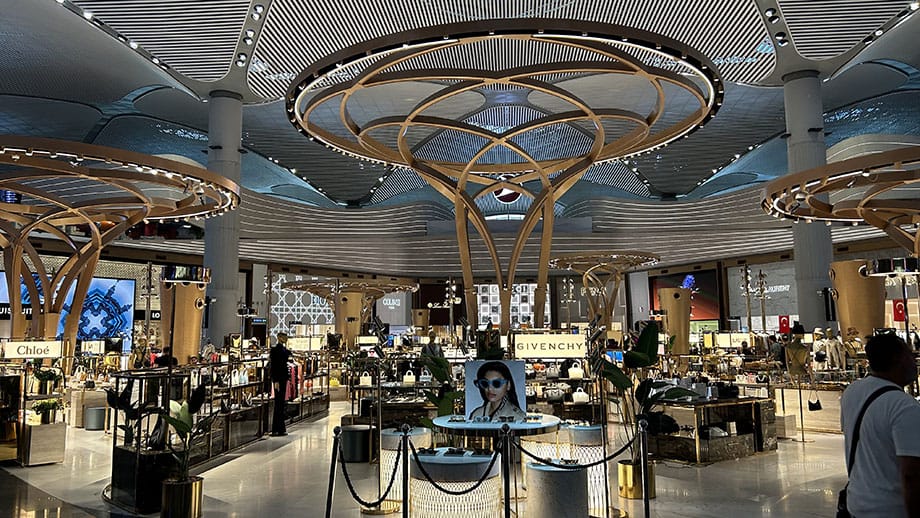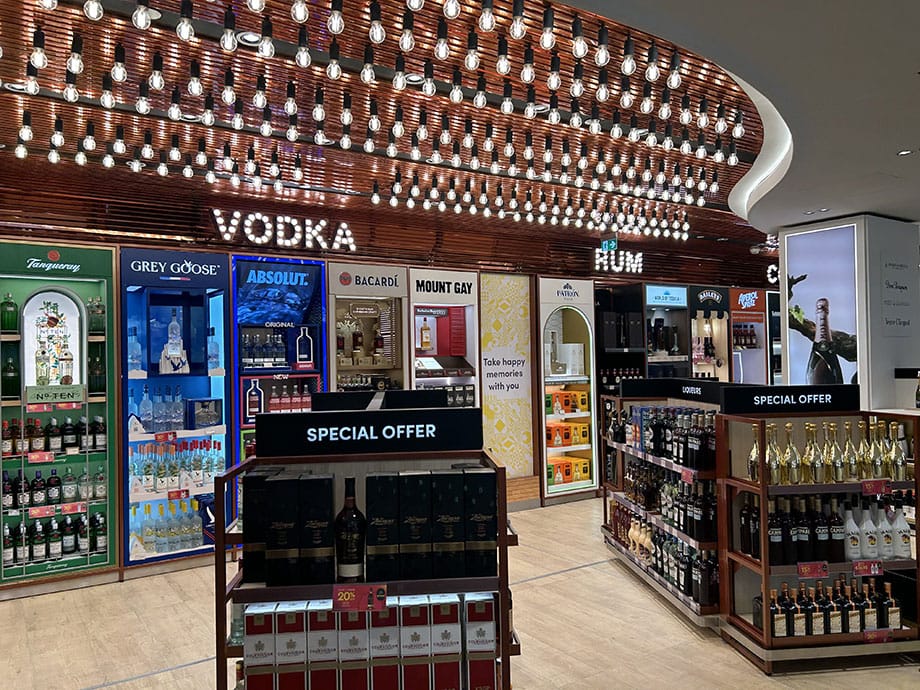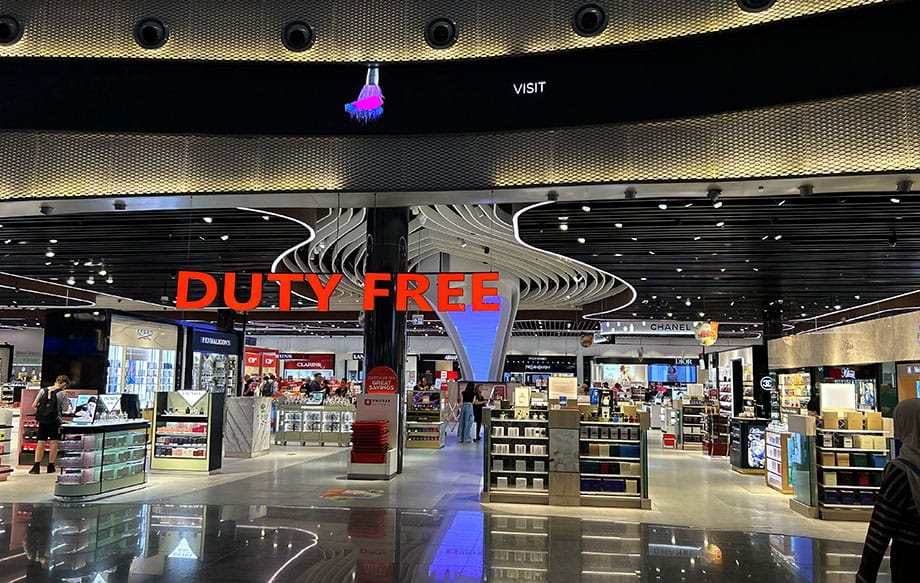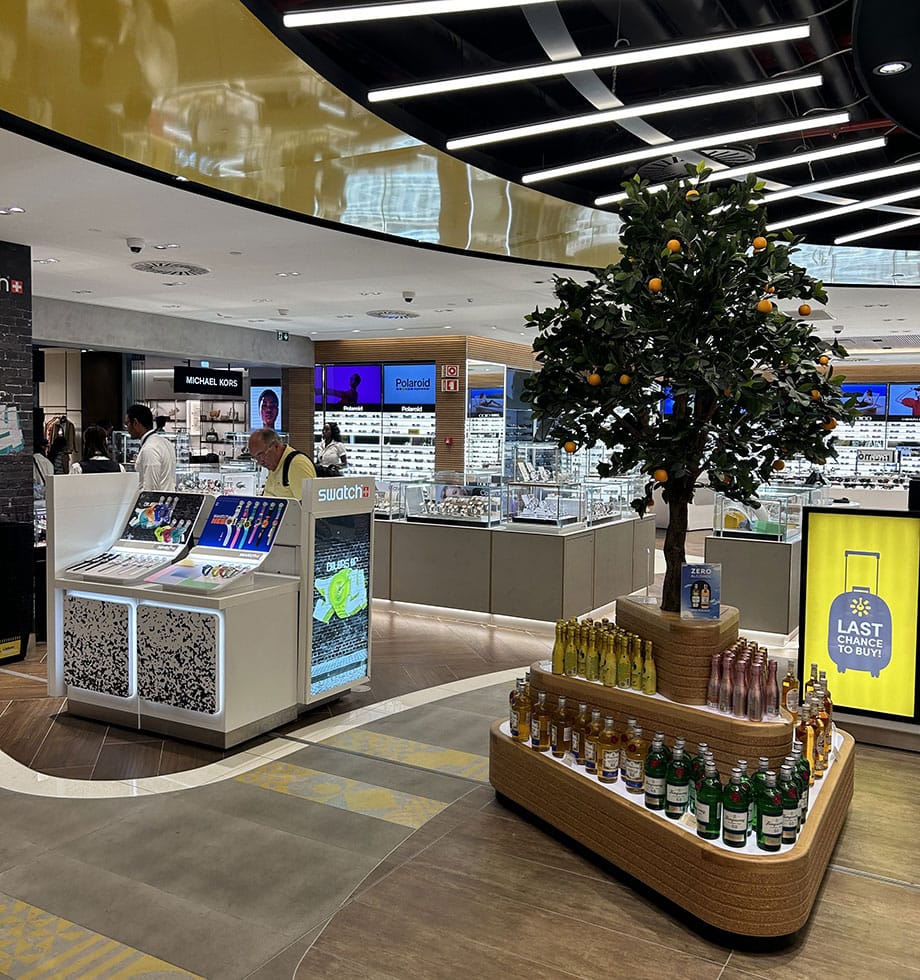How the Airport Retail Experience is Being Transformed

Airport shopping, once a predictable mix of duty-free and newsstands, is undergoing a profound transformation. And this isn’t just a simple evolution: it’s a strategic reinvention driven by the need for airports to diversify their revenue streams, as well as changing consumer habits, particularly among a new generation of travellers.
What are the major shifts we’re seeing in airport shopping?

1. From transaction to experience
This is the most significant shift. Airports are no longer just places of transit. Now they’re becoming ‘brand stages’ and destinations in themselves. The focus is moving from a quick purchase to a memorable, immersive experience. And this is crucial for engaging younger travellers such as Millennials and Gen Z who value experiences and shareable moments more than a simple product acquisition.
2. The rise of ‘Phygital’ and Omnichannel retail
The airport shopping experience is increasingly blending the physical and digital, and we’re seeing retailers cleverly integrating technology in order to enhance the customer journey, with a growth in:
- Click-and-Collect: Travellers can now browse and purchase items online before their flight and simply pick them up at the airport store.
- Showrooms: Brands are setting up physical spaces for customers to interact with products, with orders then placed for home delivery.
- Interactive displays: Digital signage and augmented reality are being used to provide personalised product recommendations and engaging brand content.
3. A broader mix on offer
While the familiar duty-free stores remain a core component of our shopping experience, the product mix is definitely diversifying. Airports are introducing more specialised and localised offerings to appeal to a wider range of tastes. This includes:
- Health and wellness: Spas, massage services and healthy food options are becoming more prevalent, as airports cater to the wellbeing of stressed travellers.
- Leisure and entertainment: From art installations and exhibitions to music listening rooms and even small-scale fitness classes, airports are adding non-retail activities to increase dwell time and help travellers relax pre boarding.
- Local and niche brands: Airports are increasingly showcasing local products and smaller, specialised brands to offer travellers a sense of place and authenticity.
What are the most popular stores?

Despite the shifts, some stores and categories remain popular, although we’re seeing a change in their presentation.
1. Beauty and fragrance
This is a top-performing category globally because it gives travellers the opportunity to test scents and products in person, often with exclusive airport-only releases and promotions.
2. Liquor and confectionery
As a traditional favourite, these drink and sweets offerings continue to thrive, especially with the lure of duty-free pricing. They’re often purchased as gifts or a personal treat that can be enjoyed on holiday.
3. Convenience and news/books
Although disappearing off the high street, WHSmith remain a staple in the airport, as they cater to the immediate needs of travellers, from last-minute snacks and drinks to books and magazines. Their ongoing airport success lies in their ubiquity and a product mix that’s essential for any journey.
4. Specialised electronics
Stores selling headphones, chargers, power banks, and other travel-related gadgets are a growing segment, as they capitalise on our pre-holiday forgetfulness and the desire for convenient, high-quality tech.
Changes in consumer habits

Consumer behaviour is at the heart of this transformation. The ‘captive audience’ mentality of the past is being replaced by a more discerning, digitally savvy traveller.
Shift from price to experience
While competitive pricing is still relevant, data shows that a growing number of travellers, particularly Millennials and Gen Z, are more motivated by the in-store experience than by a bargain. They value the ability to browse, discover new products, and indulge in a moment of self-care.
The influence of digital
Travellers are using their smartphones for everything from researching products to planning their airport visit. They expect a seamless digital experience that integrates with the physical store and this includes mobile payment options and targeted promotions.
Focus on personalisation and service
As consumers become more demanding, they expect personalised service, which has led to the rise of personal shoppers, tailored loyalty programmes, and curated product selections based on a traveller’s profile.
The ‘Treat Yourself’ mindset
A significant number of travellers are in a relaxed, aspirational, or celebratory mood at the airport. This creates a ‘treat yourself’ mindset, where they’re more willing to make an impulse purchase or splurge on a luxury item they might not have bought at home.
It could be said that airport shopping is a microcosm of the broader retail industry. It’s adapting by moving beyond pure commerce to becoming a key part of the travel experience itself, offering not just products, but moments of discovery, indulgence, and convenience.
If you’re planning a new retail concept or rethinking your brand experience, we’d love to collaborate. Let’s talk about how great design can elevate your next project.
